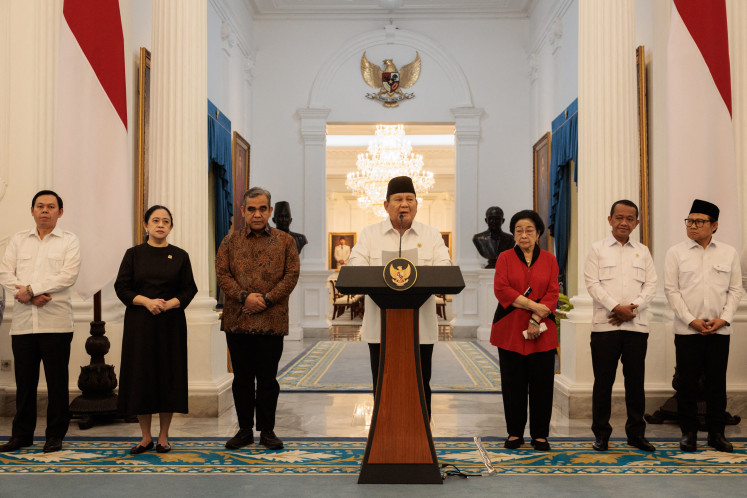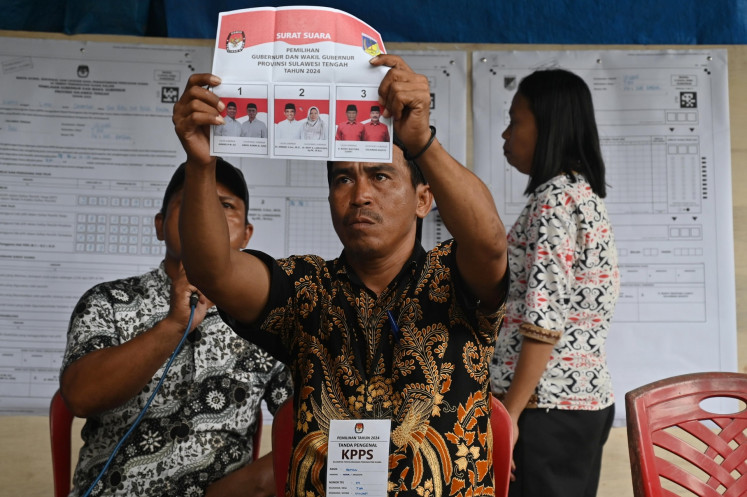Popular Reads
Top Results
Can't find what you're looking for?
View all search resultsPopular Reads
Top Results
Can't find what you're looking for?
View all search resultsBridging Law and Technology: The Growing Importance of Privacy Compliance Automation Tools
Change text size
Gift Premium Articles
to Anyone
M
any organizations in Indonesia, from small enterprises to large corporations, are facing challenges in implementing the Personal Data Protection Law (PDP Law), which transition period ended on 17 October 2024. One key reason for this is the general lack of familiarity with this relatively new regulation.
Based on our experience working with clients from various sectors, we have found that many companies are still unaware of the new obligations arising from the PDP Law, including the requirement to maintain specific documentation related to data processing activities. When it comes to managing data privacy, such as conducting records of processing activities, data protection impact assessments and handling data subject rights requests, many organizations still rely on manual systems, often using Excel or Word files that are filled out and shared via cloud drives or emails. These methods are time-consuming, prone to human error and may interfere or cause delays in business operations.
To address these issues, it is crucial to increase public awareness about the new obligations as mandated by the PDP Law and individuals’ data privacy rights under it. Understanding the implications of these rights is the first step toward building a stronger data protection culture.
From a technological standpoint, Privacy-Enhancing Technologies (PETs) have appeared as more effective alternatives to manual processes. Common PETs include anonymization, pseudonymization and encryption, tools that play a critical role in protecting personal data during collection, storage and transmission. These are especially vital for industries that handle substantial number of personal data.
In addition to these technical safeguards, many organizations are increasingly adopting privacy compliance automation tools. While these tools are generally not considered PETs in the strictest sense, they are nonetheless essential for translating regulatory requirements into actionable processes, especially for larger organizations or those engaged in complex data processing.
Budget constraints and limited technical capabilities pose major barriers to adoption of privacy compliance automation tools, especially for small and medium-sized enterprises (SMEs). In contrast, larger enterprises, such as financial institutions, are more likely to invest in privacy compliance automation tools to ensure the documentations are conducted efficiently, accurately and may reduce the disruption to business operations. Additionally, such tools also help mitigate regulatory risks and reputational harm.
With the introduction of the PDP Law, businesses in Indonesia must now navigate a new and complex regulatory framework. The absence of comprehensive supporting regulations adds further uncertainty, making this early stage of transition particularly challenging. As a result, many organizations are still focused on fulfilling the law’s basic requirements before progressing to more advanced privacy automation tools.
Despite the challenges, the evolving landscape presents long-term opportunities. Collaboration among stakeholders, legal, technical and organizational, is becoming increasingly essential for navigating data protection obligations under the PDP Law.
Compliance Requirement
As organizations strive to meet compliance requirements, many are recognizing the limitations of manual approaches. These methods may not only impact operations but also demand significant resources, including dedicated teams and infrastructure. Consequently, there is a growing shift toward privacy automation tools, which are critical for operationalizing compliance effectively.
Such tools include automation of Records of Processing Activities (ROPA), Data Protection Impact Assessment (DPIA), Third Parties Management, Data Retention Schedule, Personal Data Breach Documentation, Legitimate Interest Assessment (LIA) and Data Subject Rights (DSR). These solutions streamline privacy management, making compliance both scalable and sustainable.
Privacy compliance automation tools offer more than just regulatory compliance; they provide a strategic advantage. By embedding privacy into business systems and processes, organizations demonstrate accountability, build customer trust, and enhance brand reputation.
For example, a company using DSR management tools can deliver prompt and transparent responses to data access or deletion requests from data subjects. This proactive approach improves the user experience and fosters customer loyalty. These tools also empower users to exercise their rights under the PDP Law, reinforcing transparency and trust. By reducing errors and standardizing processes, they help businesses maintain a reliable and positive brand image.
We believe that cross-disciplinary collaboration, and access to cost-effective, off-the-shelf compliance solutions tailored to the local context are critical steps forward. Given the growing complexity of data protection requirements under the UU PDP, the need for compliance tools is undeniable. Tools that offer automated documentation, real-time monitoring and guided assessments can significantly reduce the burden on internal teams.
For privacy tools to be truly effective in Indonesia, they must go beyond functionality, they need to be designed with accessibility and relevance in mind. Cost remains a major hurdle, particularly for companies constrained by resource limitations. To encourage widespread adoption, these tools must be affordable and offer pricing models that accommodate organizations of all sizes.
Localization is also key for the usage of the tools. To be genuinely useful, tools must be aligned with PDP Law, incorporating local legal frameworks, cultural norms and language. Without this contextual relevance, adoption and compliance may suffer.
Equally important is user-friendliness. With data protection still a relatively new concept in Indonesia, many users may lack legal or technical expertise. Tools should feature intuitive interfaces, simple navigation and clear instructions to ensure they can be used effectively by a wide range of users.
Finally, scalability is essential. As organizations grow and their operations expand across departments or borders, privacy tools must be capable of adapting to more complex needs. A scalable solution ensures that privacy operations are still consistent and effective, no matter the size or structure of the business.
As privacy regulations become more technical, lawyers and the general counsels play an essential role in ensuring that automation tools align with legal and regulatory standards. They help interpret provisions such as purpose limitation, lawful basis for processing, and data subject rights. Lawyers working together with the general counsels also serve as translators between legal and technical teams, ensuring that legal requirements are accurately reflected in technical implementations. They ensure privacy features are legally compliant and operationally practical. Their expertise supports the development of robust data protection policies and evaluations of whether privacy controls meet regulatory standards. This means lawyers, working closely with the general counsels of the companies, play a key role in shaping products and tools to ensure they comply with data privacy regulation.
Collaboration between legal professionals and software developers is especially important in embedding privacy-by-design principles into product development. Rather than treating privacy as an afterthought, organizations should integrate safeguards from the outset. Lawyers can guide this process by advising on risk assessments and ensuring that transparency, consent and user rights are respected by default.
To conclude, as Indonesia continues its digital transformation, organizations that adopt privacy automation tools in compliance with the PDP Law can enhance customer trust and strengthen their brand reputation. However, achieving these outcomes requires close collaboration with legal professionals. By bridging the gap between law and technology, lawyers play a critical role in helping businesses navigate the complexities of modern data protection, laying the foundation for a more secure and trustworthy digital ecosystem.











